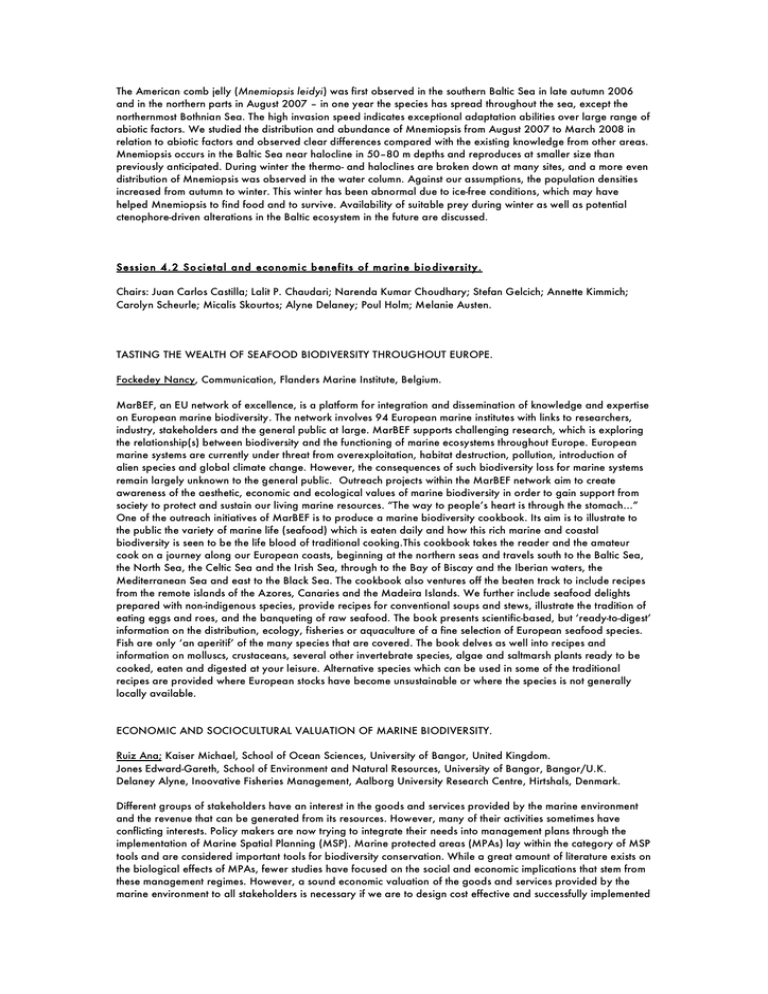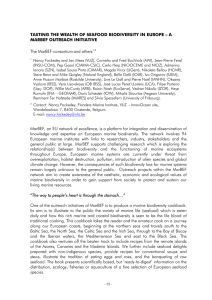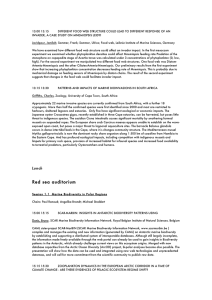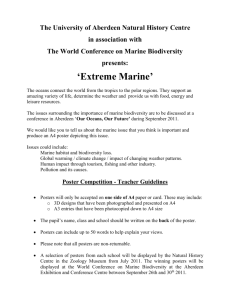Mnemiopsis leidyi
advertisement

The American comb jelly (Mnemiopsis leidyi) was first observed in the southern Baltic Sea in late autumn 2006 and in the northern parts in August 2007 – in one year the species has spread throughout the sea, except the northernmost Bothnian Sea. The high invasion speed indicates exceptional adaptation abilities over large range of abiotic factors. We studied the distribution and abundance of Mnemiopsis from August 2007 to March 2008 in relation to abiotic factors and observed clear differences compared with the existing knowledge from other areas. Mnemiopsis occurs in the Baltic Sea near halocline in 50–80 m depths and reproduces at smaller size than previously anticipated. During winter the thermo- and haloclines are broken down at many sites, and a more even distribution of Mnemiopsis was observed in the water column. Against our assumptions, the population densities increased from autumn to winter. This winter has been abnormal due to ice-free conditions, which may have helped Mnemiopsis to find food and to survive. Availability of suitable prey during winter as well as potential ctenophore-driven alterations in the Baltic ecosystem in the future are discussed. Session 4. 2 So cietal and economi c benefits of marine bio diversity. Chairs: Juan Carlos Castilla; Lalit P. Chaudari; Narenda Kumar Choudhary; Stefan Gelcich; Annette Kimmich; Carolyn Scheurle; Micalis Skourtos; Alyne Delaney; Poul Holm; Melanie Austen. TASTING THE WEALTH OF SEAFOOD BIODIVERSITY THROUGHOUT EUROPE. Fockedey Nancy, Communication, Flanders Marine Institute, Belgium. MarBEF, an EU network of excellence, is a platform for integration and dissemination of knowledge and expertise on European marine biodiversity. The network involves 94 European marine institutes with links to researchers, industry, stakeholders and the general public at large. MarBEF supports challenging research, which is exploring the relationship(s) between biodiversity and the functioning of marine ecosystems throughout Europe. European marine systems are currently under threat from overexploitation, habitat destruction, pollution, introduction of alien species and global climate change. However, the consequences of such biodiversity loss for marine systems remain largely unknown to the general public. Outreach projects within the MarBEF network aim to create awareness of the aesthetic, economic and ecological values of marine biodiversity in order to gain support from society to protect and sustain our living marine resources. “The way to people’s heart is through the stomach…” One of the outreach initiatives of MarBEF is to produce a marine biodiversity cookbook. Its aim is to illustrate to the public the variety of marine life (seafood) which is eaten daily and how this rich marine and coastal biodiversity is seen to be the life blood of traditional cooking.This cookbook takes the reader and the amateur cook on a journey along our European coasts, beginning at the northern seas and travels south to the Baltic Sea, the North Sea, the Celtic Sea and the Irish Sea, through to the Bay of Biscay and the Iberian waters, the Mediterranean Sea and east to the Black Sea. The cookbook also ventures off the beaten track to include recipes from the remote islands of the Azores, Canaries and the Madeira Islands. We further include seafood delights prepared with non-indigenous species, provide recipes for conventional soups and stews, illustrate the tradition of eating eggs and roes, and the banqueting of raw seafood. The book presents scientific-based, but ‘ready-to-digest’ information on the distribution, ecology, fisheries or aquaculture of a fine selection of European seafood species. Fish are only ‘an aperitif’ of the many species that are covered. The book delves as well into recipes and information on molluscs, crustaceans, several other invertebrate species, algae and saltmarsh plants ready to be cooked, eaten and digested at your leisure. Alternative species which can be used in some of the traditional recipes are provided where European stocks have become unsustainable or where the species is not generally locally available. ECONOMIC AND SOCIOCULTURAL VALUATION OF MARINE BIODIVERSITY. Ruiz Ana; Kaiser Michael, School of Ocean Sciences, University of Bangor, United Kingdom. Jones Edward-Gareth, School of Environment and Natural Resources, University of Bangor, Bangor/U.K. Delaney Alyne, Inoovative Fisheries Management, Aalborg University Research Centre, Hirtshals, Denmark. Different groups of stakeholders have an interest in the goods and services provided by the marine environment and the revenue that can be generated from its resources. However, many of their activities sometimes have conflicting interests. Policy makers are now trying to integrate their needs into management plans through the implementation of Marine Spatial Planning (MSP). Marine protected areas (MPAs) lay within the category of MSP tools and are considered important tools for biodiversity conservation. While a great amount of literature exists on the biological effects of MPAs, fewer studies have focused on the social and economic implications that stem from these management regimes. However, a sound economic valuation of the goods and services provided by the marine environment to all stakeholders is necessary if we are to design cost effective and successfully implemented








